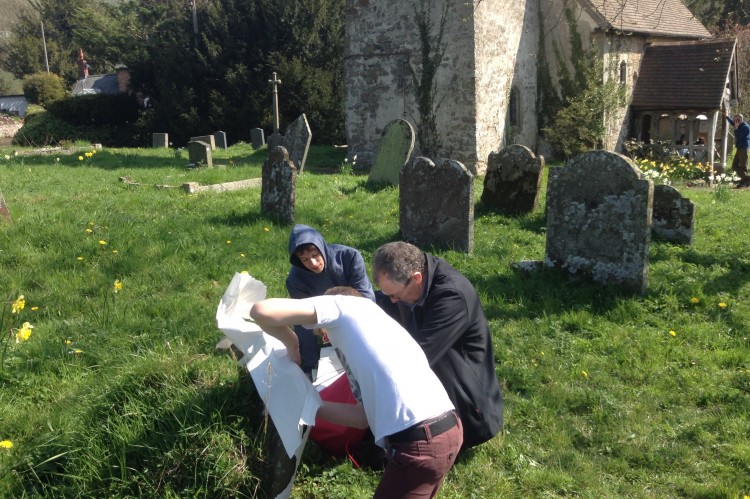Headstone rubbings are an important part of a gravestone recording project as they allow us to make 1:1 copies of some stones. There are a number of do's and don't's involved and here Oliver outlines the main one - do not rub fragile stones. The rule of thumb we follow is to leave the headstones better than we found them.
The main guidance for doing rubbings are;
1. to pick a dry, low-wind day.
2. Never do a rubbing of a fragile stone - some of the stones in Hope Bagot were so fragile that they looked like a sneeze would cause damage.
3. We don't do rubbings to read inscriptions or epitaphs; those can be read using a mirror or torch.
4. We usually do rubbings to record the religious symbols carved into the top of the stone.
5. Deep-cut stones do not make for good rubbings - shallow-cut and carved stones are best.
6. Photograph the rubbing sheet while it is still taped to the headstone (set the camera to 10 MPs).



